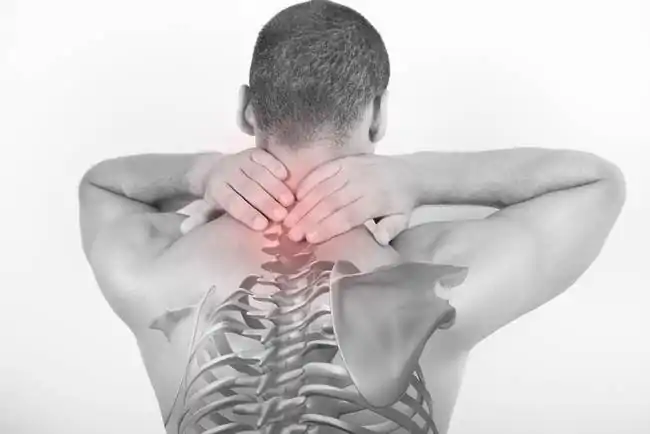Simply to find the cause.
If you know where to look.
Precisely localise the trigger for upper cervical spine pain

The head sits on a neuralgic point
Injuries to the upper cervical joints, sometimes referred to as whiplash, have many symptoms that can greatly limit the lives of those affected: Cracking and crunching noises or difficulty turning the head. Constant radiating pain in the shoulder region can occur, migraine-like headaches, tinnitus, concentration disorders or even dizzy spells. Complaints that turn everyday life into a time of suffering and thus mean an enormous loss of quality of life. In the worst case, even the loss of the ability to work and thus the securing of one’s livelihood is at stake.
And it can affect anyone: Because whiplash is often not only suffered by car drivers after a traffic accident. Bicycle crashes, sports injuries or accidents at home can also result in injuries in the area of the head joints. Even malpositions after birth or a fall in infancy can lead to symptoms that still occur in adulthood.
Where do the symptoms come from?
As different as the causes of an injury to the upper cervical spine are, as different can be the symptoms. Damage to the complex ligament-capsule apparatus around the upper cervical joint is often the result of a force impact from the back, front or side. As a result, the sensitive joints with their muscles, ligaments, capsules, fasciae and nerves can be injured and thrown off balance. This can lead to a wide variety of symptoms, the trigger of which could not be diagnosed precisely in most cases with the current examination methods.
The completely open Upright MRI is different.
The system can provide clarity in the search for the real cause of pain.

